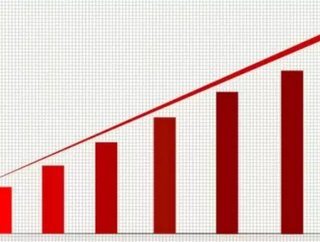DEALING WITH INACCURATE FORECASTS

Written by Todd Taylor, a partner at OPS Rules Management Consultants
"The funny thing about forecasts is.…they are never accurate,” explained a very experienced operations executive during a recent meeting. A veteran in our industry with 30+ years in supply chain and manufacturing operations; this executive works at a very senior level in an operations leadership position for one of the leading technology companies in the world. This man claims that that he has “blunted his sword” trying to improve forecasts, but in the end….”forecasts are always wrong”.
We all know that forecasts are never accurate. We also understand the “bullwhip effect” and what happens in traditional value chains the further a company is from the end consumer.
Unless there is complete transparency to end-user demand, forecasts become more and more inaccurate the further from the end user we are in the value chain.
So, why do we put so much time and effort into improving forecasts? It’s probably because inaccurate forecasts lead to lost sales or inflated inventory, which in turn cost our companies lost revenue or unnecessary costs.
Should we continue to “blunt our swords” on improving forecasting? What options are available to ensure we have the right product available for our customers to buy - without burgeoning inventory costs?
In other words, how do we plan for this certain uncertainty? A few ideas and strategies come to mind:
1. Focus on the customer: You never go wrong here. Maintain an optimal network design centered on your customer and how they want to receive and consume your product. Segment your supply chain based upon this understanding and a clear picture of your unique value proposition.
2. Define the right push-pull boundary and strategy. Optimize your inventory allocation process based upon an understanding of your demand certainty. If you have stable demand for some products, a push strategy can be employed. But where demand is uncertain, a pull strategy will need to dominate your policy.
3. Share information. No matter where you sit in the value chain, costs rise when there is a lack of visibility to demand shared along the value chain. Encourage information sharing amongst your trading partners and be a catalyst and good example of information sharing.
4. Manage your product portfolio. This entails honestly and accurately evaluating the costs associated with the products in your portfolio. Most companies do not take a comprehensive approach to reducing the complexity of their portfolio. Complexity management is much more than a one-time, revenue and activity-based costing exercise. It is not only a thorough evaluation of the products in your portfolio, but also a joint agreement with product development, product management, marketing, ops and finance on the criteria and guidelines for new product introduction (NPI) and the refinement of the product management process and metrics to ensure the company adheres to these decisions. It’s certainly not an easy task, but well worth the effort.
The benefits associated with segmenting your supply chain to match your customers and your value proposition and channels, defining the right push-pull mix, sharing information across the value chain and managing the complexity in your product portfolio are enormous. For most manufacturing companies, 80 percent of profits come from 20 percent of products. The same may be true for the cost side of the equation….20 percent of products may account for 80 percent of the variable costs in the supply chain.
So don’t become overly-frustrated and concerned with inaccurate forecasts. Simply manage the uncertainty by focusing what you can control. Start with the 4 ideas mentioned above.
For more information about segmenting your supply chain, click here.
- How the C3 AI Supply Chain Suite Drives Increased ResilienceTechnology
- The Art of Supply Chain Planning with Gartner, SAP, KinaxisSupply Chain Risk Management
- Top 100 Women 2024: Stephanie Rankin Smith – No. 8Operations
- Why SAP Supply Chain Solutions Could Transform ManufacturingTechnology






